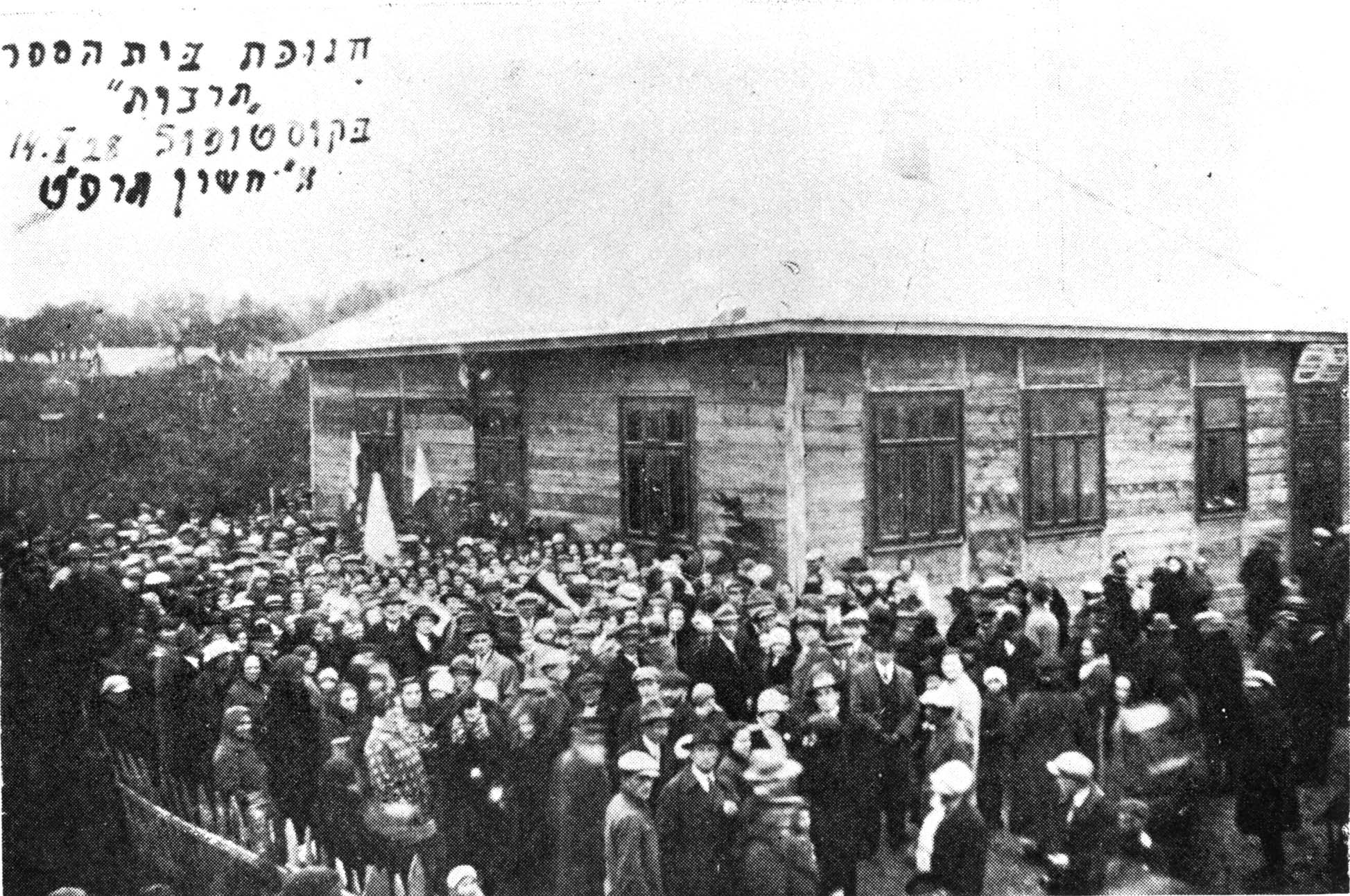

Kostopol

After World War I, Kostopol was incorporated into the independent Polish State. In 1921, it had 1,185 Jewish residents, who comprised 39.6 percent of the total population. In the interwar period, Jews were among the leading merchants and artisans in Kostopol. They owned sawmills and factories that manufactured wood items, glassware, flour, oil, construction materials, and farm implements. Jews also expanded into new fields of economic activity, such as services for quarry workers and employment in state-owned enterprises.
In the mid-1920s, Kostopol became a county seat. It was linked up to the railway network, and underwent general development.
The town's Jewish community ran a Hebrew-language Tarbut school and a kindergarten. Zionist parties and their youth movements (Hashomer Hatzair, HeHalutz, and Beitar), as well as other political parties, were active in the town. There were also Zionist pioneer-training communes, whose members were among the founders of Kibbutz Negba in Israel.
On the eve of World War II, there were approximately 3,920 Jews in Kostopol, out of a total population of 9,800.
In September 1939, the Red Army entered Kostopol in the aftermath of the Molotov-Ribbentrop Pact, and the town became part of Soviet Ukraine. Under Soviet rule, all the factories were nationalized, and the Hebrew-language schools were forced to teach the Soviet curriculum in Yiddish. In fall 1939, some Jewish refugees from the Nazi-occupied western and central Poland settled in the town. By mid-1941, an estimated 4,500 Jews resided in Kostopol. Only a handful of Jews were able to evacuate eastward during the first ten days of the Soviet-German war. In all likelihood, there were more than 4,000 Jews left in the town at the start of the German occupation.
German troops occupied Kostopol on July 1, 1941. In the early days of the occupation, some Ukrainians nationalists murdered several Jews as suspected Communists and looted Jewish property.
Upon the orders of the Germans, a Judenrat was appointed, and the Jews were required to wear Star-of-David armbands and conscripted for forced labor in the town and its vicinity – in local sawmills, at the train station, at the sewage treatment plant, and in local offices. The Jewish laborers, including some women, were beaten and otherwise abused. The Jews had to surrender all their valuables and furs, and they were forced to pay an exorbitant ransom. A labor camp was built for young Jews from nearby towns.
On August 16, 1941, German units shot a large group of local residents behind the Dynamo Stadium in Kostopol. The victims of this massacre included 460 or 480 Jewish men (one of whom was the head of the Judenrat, Dawid Dajan) and 20 Jewish women from among the most affluent members of the community, as well as some Poles, Russians, Ukrainians, and Roma.
On October 1 (or November 10), 1941, some 1,400 members of the families of the murdered Jews were taken out of the town on the pretext of joining their relatives, and were then murdered at the same site.
On October 5, 1941, a ghetto was set up in Kostopol. In addition to 4,000 local Jews, another 500 or so Jews from the surrounding villages were brought in, swelling the total number of inmates to about 4,500. The ghetto itself was divided into three sections. The male Jews aged 16 to 60, most of whom had been brought in from other towns, were moved into the section known as the labor camp, which was fenced off with barbed wire. The women, little children, and elderly people were housed in the main ghetto, which was located in the gas (Cobbler's Street) and surrounded by a tall barbed-wire fence. The skilled workers (mostly artisans), members of the Judenrat, the Jewish Police, and their families were issued special passes, and they lived outside the ghetto, along the fence near the gate. The Judenrat set up a public kitchen in the ghetto. Conditions were harsh, leading to outbreaks of various diseases, which the Judenrat feared might lead to the liquidation of the ghetto. By May 1942, the Germans had concentrated all the young Jewish men from the Gebiet Kostopol in the labor camp.
On July 13, 1942, the majority of the inmates of the Równe Ghetto were murdered in Janowa Dolina, west of Kostopol.
The Kostopol Ghetto was liquidated on August 25 or 26, 1942, and its inmates (including the Jews from the villages of Małe Siedliszcze and Antonówka) were murdered by German units in the forest outside the town, near the agricultural colony of Chotenka. A few Jews hid within the ghetto, or managed to escape during the murder operation, but most of them were soon caught by local Ukrainians and handed over to the Germans, who proceeded to shoot them.
That same day, the Germans performed a roll call at the labor camp in the town. Having anticipated the liquidation, some inmates of the camp, led by Gedalia Breier, organized an escape and fled into the forests during the roll call. While some of them were murdered in the camp itself, most were captured by Ukrainians and Germans and murdered elsewhere, most probably near the Chotenka Forest.
Kostopol was liberated by the Red Army on January 31, 1944.


